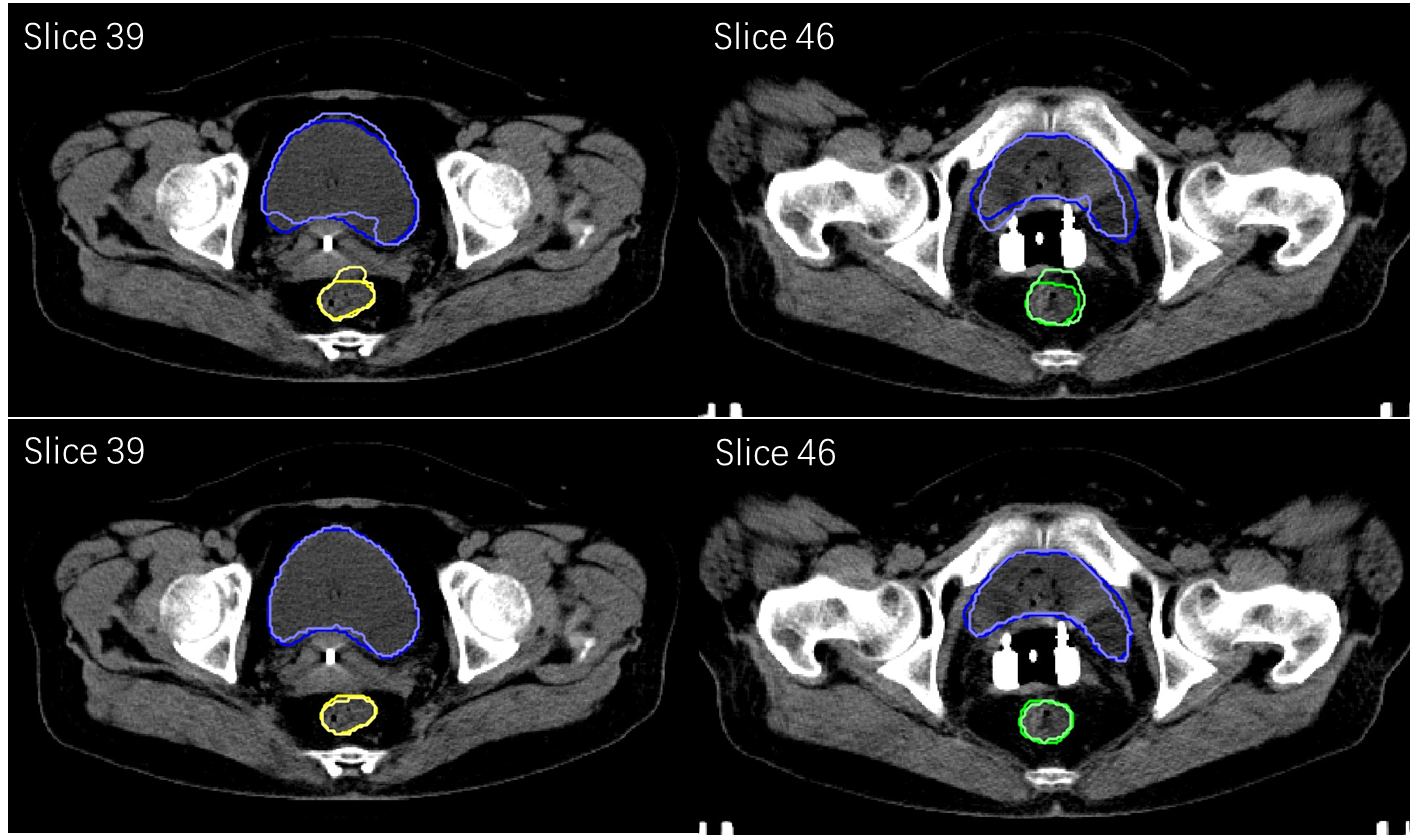This year, PVmed’s joint research about using AI-enhanced method to automatically segment organs on CT image for cervical cancer Brachytherapy with Xiangya University Hospital was accepted by ASTRO 2020 annual meeting [1], and the co-author Rongrong Wang, Deputy director of Oncology department and Director of Oncology Radiotherapy Department, Xiangya Hospital, Central South University, was invited to give an oral presentation.
Cervical cancer is the fourth most common cancer in women. Researchers estimated that 570, 000 women were diagnosed with cervical cancer in 2018 worldwide, and around 311, 000 women died from this disease. In China, there are 106 000 cases and 48 000 deaths domestically, and it together with India has contributed more than a third of the global cervical burden [2]. In terms of treatment, radiotherapy is commonly adopted, along with surgery and chemotherapy. Brachytherapy, a branch of radiation therapy, is often recommended for treating this cancer type. It places radioactive material inside the body and deep into the areas where requiring treatment to shrink the tumors.
Before actual treatment delivery, locating the healthy organs and tissues become critical as radiation has to be less irradiating to these areas to ensure minimum toxicities and side-effects. Therefore accurately segmenting or contouring these structures, normally on CT, is an essential task for radiation oncologists. However, it is also challenging and laborious work, having lots of variances which might lead to negative treatment outcomes. In order to address this issue, PVmed with Dr. Wang-led team developed a super perception convolutional neural network (SPNet) to auto-contour OARs (organ-at-risk) on CT image to avoid organs toxicity in cervical cancer brachytherapy.
90 Computed Tomography (CT) images from 90 cervical cancer patients treated by brachytherapy in Xiangya University Hospital were collected, with 58 for training, 10 for validation, and 22 for testing respectively. Three OARs including bladder, rectum, and sigmoid are delineated by radiotherapy oncologists and crosschecked by other colleagues as Ground Truth. To evaluate the model, researchers used Dice's coefficient (DSC) as the metric, with a higher DSC value suggesting the better accuracy of organs delineation. Also, SPNet was compared with UNet as a baseline, which is another general pelvic OARs segmentation method.
On the testing dataset, the proposed method outperforms UNet, with mean DSC improved from 75.1(±16.1)%, 62.6(±16.6)% and 56.3(±17.8)% to 91.4(±2.0)%, 82.4(±6.0)% and 75.4(±8.9)% for bladder, rectum and sigmoid, respectively. If visualizing these results, the figure below also shows the performance of SPNet is still better than UNet.

Figure 1. OARs segmentation comparison between SPNet(Second row) and general pelvic OARs segmentation model(First row). Dark line: GT, Light line: prediction.
Although many industries have applied Artificial Intelligence to solve certain tasks, it just getting started in medicine, and it has unimaginable potential to benefit both physicians and patients. PVmed will continue to research and develop solutions partnered with other care providers for world health.
Resources:
[1] Organ Segmentation from CT Images Using Super Perception Convolutional Neural Networks for Cervical Cancer Brachytherapy. 2020. Available at: https://www.redjournal.org/article/S0360-3016(20)33829-3/fulltext [Accessed: 6 November 2020]
[2] Arbyn, M. et al. 2020. Estimates of incidence and mortality of cervical cancer in 2018: a worldwide analysis. The Lancet Global Health 8(2), pp. e191-e203. doi: 10.1016/s2214-109x(19)30482-6.
About Xiangya Hospital
Founded in 1906 and located in Changsha, Xiangya Hospital Central South University is a Class-A Grade-3 (top level in China) general hospital under directly supervision of the National Health Commission, an affiliated hospital of Central South University directly under the Ministry of Education, and an important center for clinical care, medical education and scientific and technological innovation in China. It enjoys a good reputation both at home and abroad for its superior techniques of diagnosis and treatment, outstanding scientific and educational strength, and profound cultural background.
About PVmed
PVmed is a medical technology company currently focus but not limited to medical image and computer vision and is committed to providing innovative and customized digital solutions to the healthcare industry. Developed in strategic partnership with leading hospitals, research institutes, and device manufacturers globally, solutions are full clinical evidence-based built on quality medical data and cutting-edge algorithms.
PVmed's mission is to empower physicians to deliver the highest standard of care to patients with consistency and efficiency, achieving optimal patient outcomes. We are the ones pushing the edge of human knowledge and understanding.
